If you were to ask anyone currently working in digital media, from journalists to analysts, they’d likely tell you the landscape is shifting. Some might say evolving, some might say collapsing, but the common theme is change.
Between multiple pivots-to-video and the Facebook algorithm single-handedly bankrupting publications, the way we consume online writing has gone through multiple profound transformations and is constantly under reevaluation.
With traditional publishing gatekeepers losing their grip, and established platforms becoming less reliable, audiences sought more direct, authentic relationships with the voices they trust.
Amid the resurgence of newsletters and direct-to-audience models, one platform has quietly but powerfully reshaped how writers create, connect, and get paid: Substack.
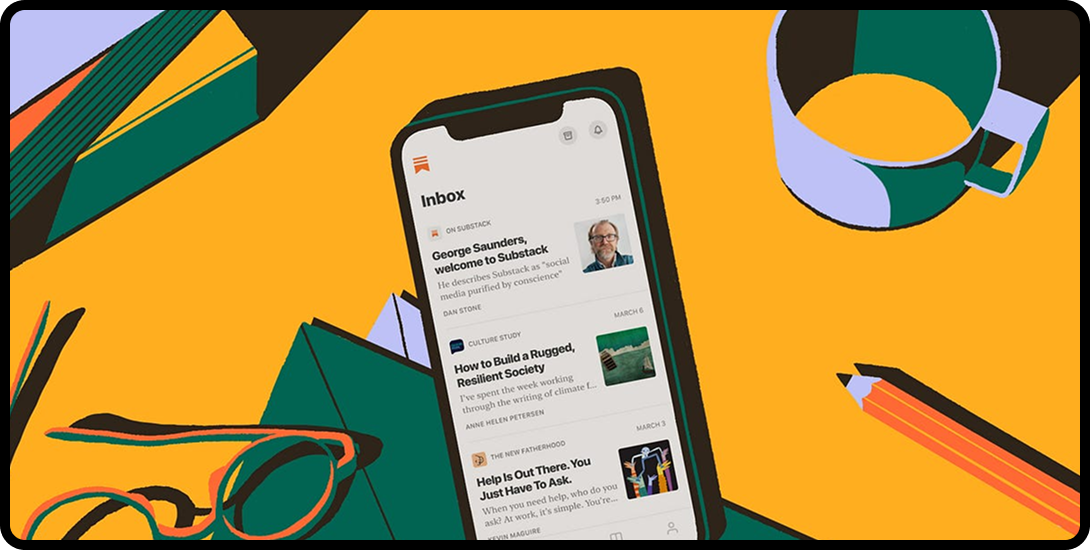
What began as a simple newsletter tool has evolved into the engine of a broader movement — one that empowers writers to own their audiences, monetize their work on their own terms, and operate like independent media brands. With low barriers to entry and built-in monetization features, Substack has positioned itself at the center of the creator economy’s literary wing.
Its appeal is much more than just a platform for newsletters — it’s a catalyst for a new kind of writer-led economy.
We’ll explore how Substack is changing the story surrounding content creation as well as what it signals for the future of writing, media, and the people who shape the narratives we follow.
Going Independent
In October 2024, Washington Post reporter Taylor Lorenz made headlines at the very same publications she had covered technology and government for by departing her prestigious job to pursue a new business model on Substack.
“I want to be able to publish whatever I want, whenever I want, and I want to get the upside of breaking news,” she was quoted at the time.
This high-profile acquisition marked a significant step in the platform’s ongoing effort to attract writers looking to break away from traditional media outlets. By encouraging journalists, commentators, and independent voices to build their own direct-to-reader businesses, the platform positioned itself as a viable alternative to legacy media models.
Part of this pitch to ambitious creators comes from the need to no longer navigate layers of editorial oversight, brand guidelines, and institutional priorities that can dilute or delay their message.
At the core of Substack’s appeal is a direct contrast between traditional publishing constraints and the autonomy that comes from a creator working to create directly for their audience, as well as themselves.

The Payoffs of Creator Autonomy
Substack’s promise as a creator-led platform allows for a more direct, unfiltered connection between the writer and their audience, empowering voices that may not have fit neatly into conventional editorial boxes — as well as offering space for niche perspectives, experimental formats, and honest, personal storytelling that might otherwise be left on the cutting room floor.
Another major draw is the ability to control how work is monetized. Instead of chasing clicks to satisfy ad-based revenue models, creators on Substack can build sustainable businesses by offering monthly and yearly subscriptions.
This subscription-funded model not only offers a more predictable income stream, but it also aligns incentives around value and trust rather than viral traffic. When readers pay directly for content, it reinforces a deeper relationship — one based on loyalty, not algorithms.
For many, this model removes the pressure to cater to advertisers or chase SEO trends, allowing creators to focus on the kind of writing that endeared them to their followers in the first place.
Beyond the practical benefits, there’s a powerful emotional and creative payoff that comes with autonomy. Creators often speak about the freedom to publish on their own terms, experiment with new formats, and grow a community that resonates with their authentic voice. This kind of ownership can be incredibly fulfilling — not just financially, but personally.
Beyond newsletters and blogs, Substack has continued to evolve its publishing capabilities — now offering support for video content, podcasts, and live conversations. This expansion signals a broader strategic shift to embrace and empower content creators across a range of mediums, solidifying its place as a multi-format platform for independent publishing.
Substack aims to transform publishing from a job into a craft, and from a platform into a movement. The result is a more diverse, dynamic media landscape where independent voices thrive and readers have more meaningful choices in the content they consume.
Lowering Barriers to Entry
Though independent publications have been a foundational part of the media landscape for as long as there has been such a thing, the idea of risking one’s livelihood to start a subscription-based venture can feel especially daunting in the current moment.
With audience management analytics and built-in monetization tools, Substack is explicitly courting non-technical users to jump in and take advantage of a feature set designed with professional writers in mind. With minimal HTML coding and custom asset support, newsletters can look as good or better than pages built from the ground up using a competitor like WordPress or Squarespace.
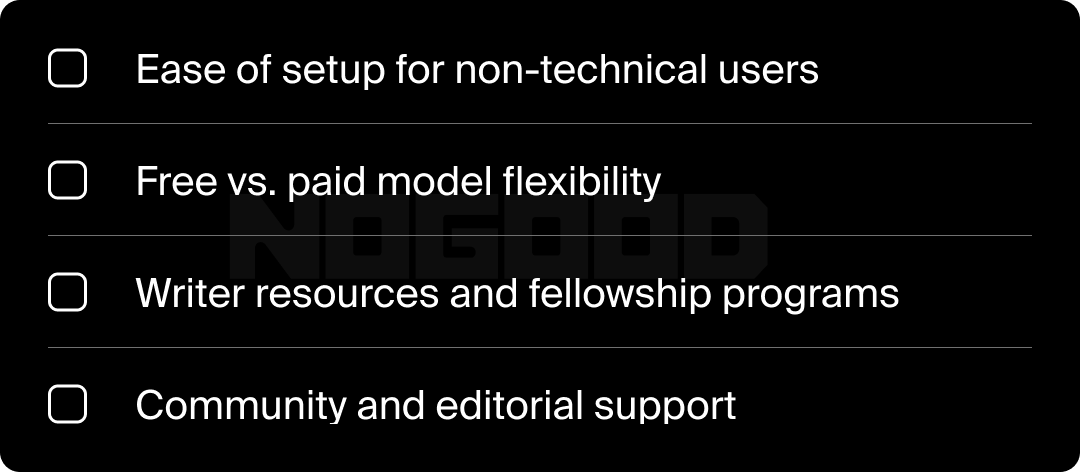
Without having to worry about an algorithmic feed and interference from platform holders, the walled garden approach allows creators to work within the same framework to get off the ground and take advantage of further customizable options to execute their own vision.
Paid Tiers and Models
A Substack newsletter can cost as little as $5 a month, and many creators choose to offer a free trial window or referral program to allow readers to get a peek behind the paywall before committing to their sign up.
With the ability to quantify a single subscriber into actual revenue, creators can build their content strategy around growing organic reach and awareness with free, follow-to-read posts as well as content exclusive to paying subscribers.
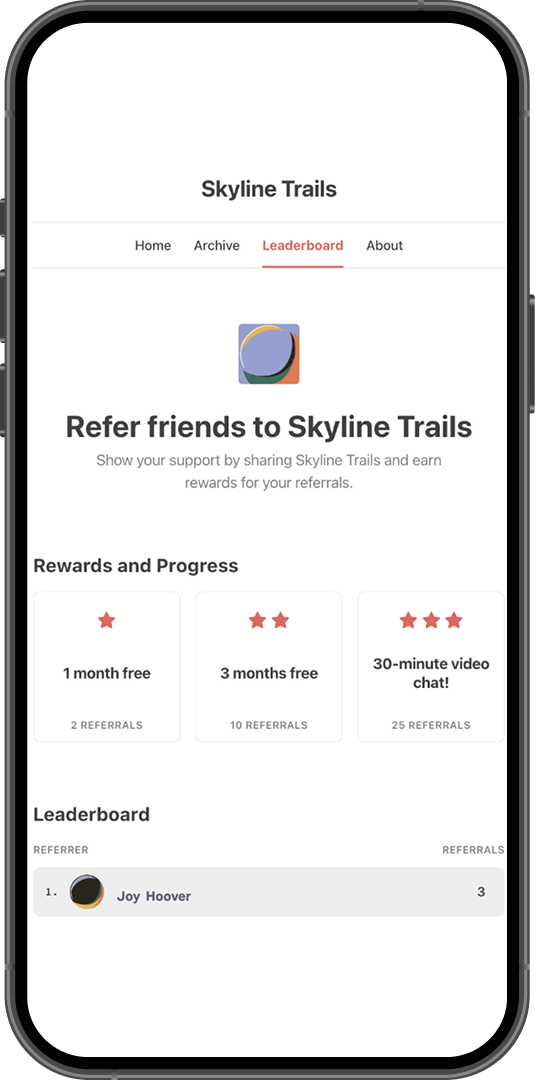
For readers, these paid memberships also offer closer access to their preferred creators, including member-only chats and periodic updates on upcoming progress. Substack smartly recognized the traction that creator-led platforms like Patreon and Kickstarter were able to capitalize on and roll these learnings into more traditional business models.
Analytics and Network Effects
With a writer’s financial well-being tied directly to the platform, Substack offers a solid set of analytics for creators, especially those focused on newsletters and written content. Many experiential features are also being added, including leaderboards that highlight referrals from other Substacks and more ways to engage directly with readers via Chat and Notes.
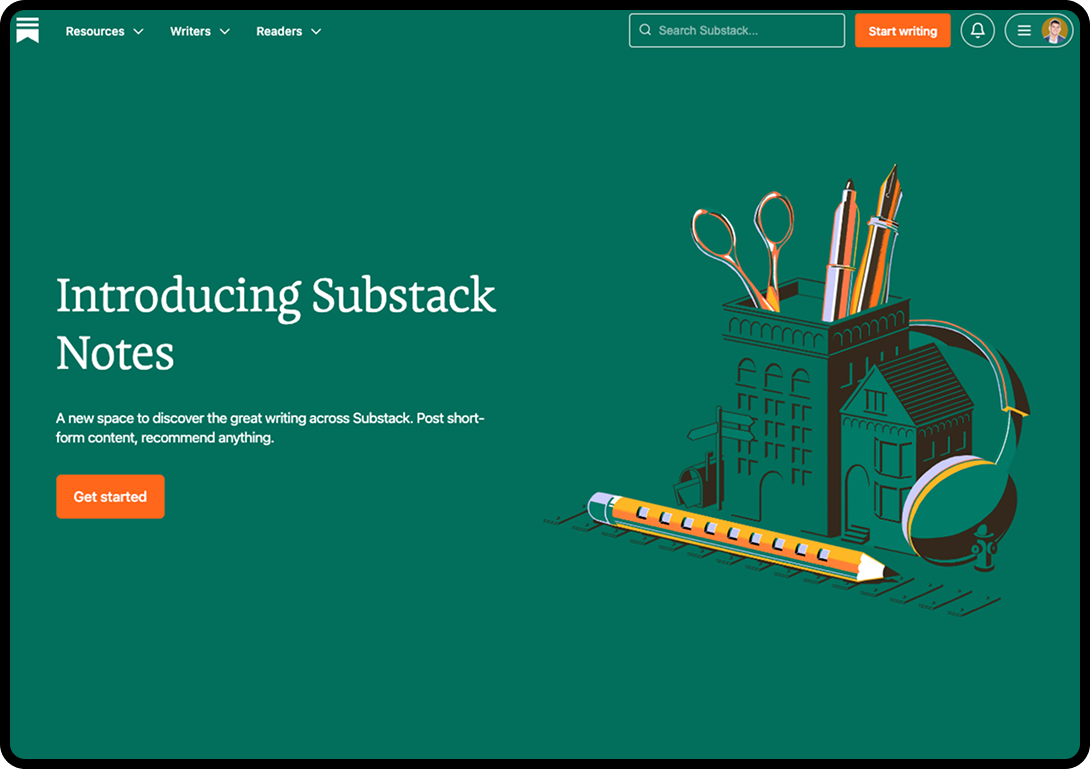
These are some of the main reporting features creators have access to:
Email Performance
- Open Rate: Percentage of recipients who opened an email.
- Click Rate: Percentage of recipients who clicked a link in the email.
- Deliverability: Basic insight into how many emails were successfully delivered.
- Unsubscribes: Shows how many people unsubscribed from a specific email.
Post Stats
- Views: Total views per post (including web and email views).
- Traffic Sources: Where your readers are coming from — direct, social, search, etc.
- Shares: Number of times your post was shared on social channels outside of Substack.
- New Subscribers: How many people subscribed from a specific post or were influenced by it.
Subscriber Insights
- Free vs. Paid Subscribers: Breakdown of how many subscribers are free vs paying.
- Top Referrers: Who or what is driving subscriptions. This could be another Substack, a website, or a social channel.
- Growth Over Time: Graphs showing subscriber growth (free + paid).
- Churn Rate: How many paid subscribers are being lost monthly.
Monetization Metrics
- Revenue: Total revenue, MRR (monthly recurring revenue), and earnings per post.
- Conversion Rate: How many free subscribers are converting into paid plans.
- Average Revenue per User (ARPU): Estimate of how much each paying subscriber is worth.
Writers as Personal Brands
With the proliferation of the creator economy, having a distinct voice has never been more important to building a consistent, compelling personal brand. Substack’s rise has been able to amplify niche voices and move conversations in directions that may have been previously overlooked in other media ecosystems.
Whether it’s a hyper-local politics newsletter, a deep dive into crypto regulation, or a personal essay series on grief and healing, Substack gives creators the tools to build and serve their own corners of the internet. The direct-to-reader format rewards consistency and clarity, allowing underrepresented perspectives to flourish without needing to chase clicks or compete for algorithmic placement.
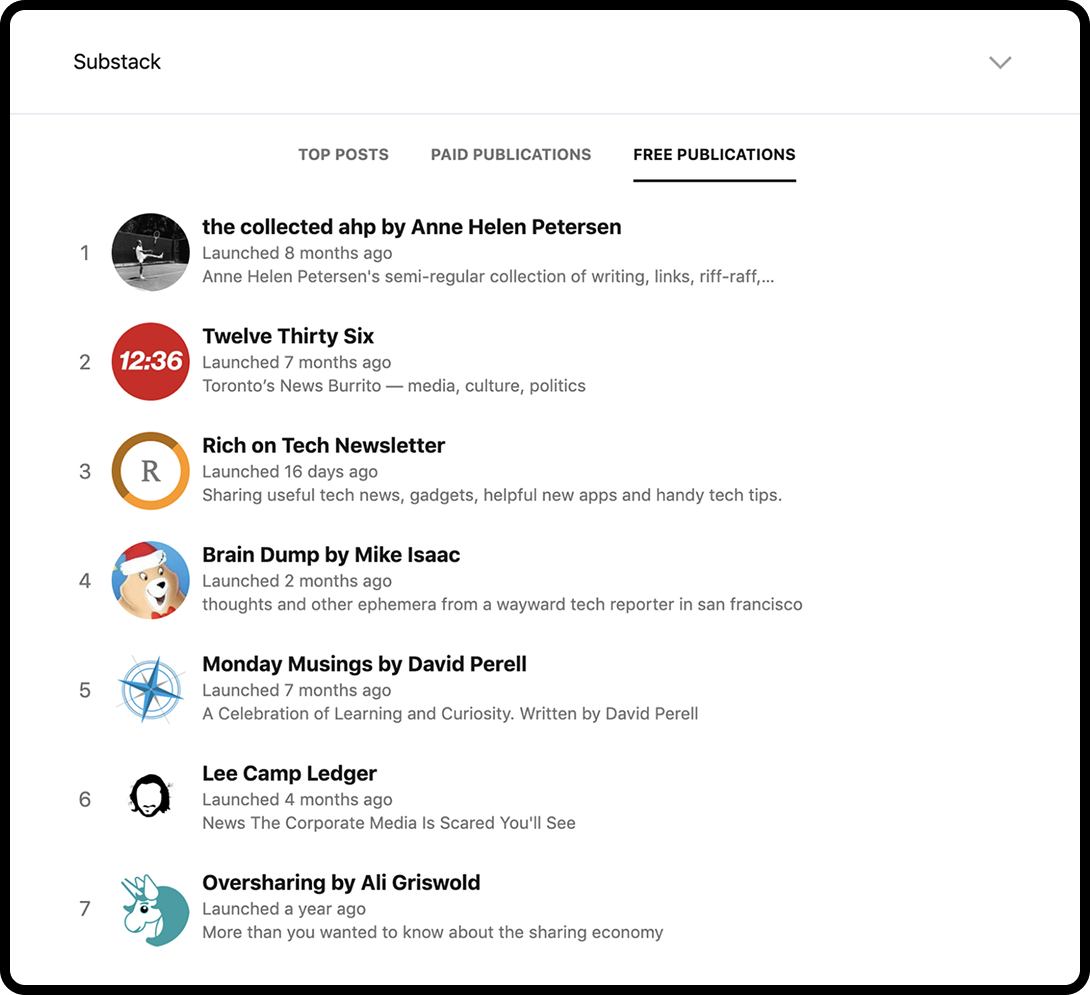
As a result, creators on Substack are increasingly functioning as entrepreneurs — crafting not just content, but communities. It’s not just about audience size anymore; it’s about loyalty and resonance.
Writers who can consistently show up, deliver value, and be transparent about their perspective are seeing readers willingly support them financially. The content itself is one piece of the puzzle, but trust is an even more valuable currency. Substack turns that trust into a business model, enabling creators to build careers rooted in connection, independence, and purpose.
What Does This Mean for the Future of Media?
Despite all these promises, Substack still faces many challenges and criticisms from readers, rival platform holders, and even creators already embedded in the platform.
New creators can feel daunted by the idea of discoverability, as concerns around Substack cutting major deals with some of its most prolific acquisitions and courting exclusive access has moved more in the direction of the publishing giants it was promising to replace.
There is also an ongoing debate around the platform’s responsibility to moderate content that may be potentially dangerous or confidential. The appeal of independence naturally attracts many creators who deal with data security and political influence, so many of the headlines attracted by stories broken on Substack face the ire of significant government entities.
Still, Substack has become as popular as it is specifically because of its “free speech” mindset. Subscribers are still in direct control of what they want to see in their inbox, and recommendations are typically made by the creators they are already subscribed to.
The sustainability of the paid newsletter model offers more opportunities for writers to branch out and supplement their content strategy with a hybrid model that incorporates video, podcasts, and paid partnerships. As mentioned, the platform has rushed to keep up with the competition by incorporating video support and live-streaming features, but new rivals like Ghost and Beehiv are looking to double down on traditional audience-funded journalism and newsletters.
Substack has become a key player in the realm of decentralized journalism online, but the conversation is still ongoing. However, the demand for independent, longform content is clear and has already shaken the way content is consumed and shared online.
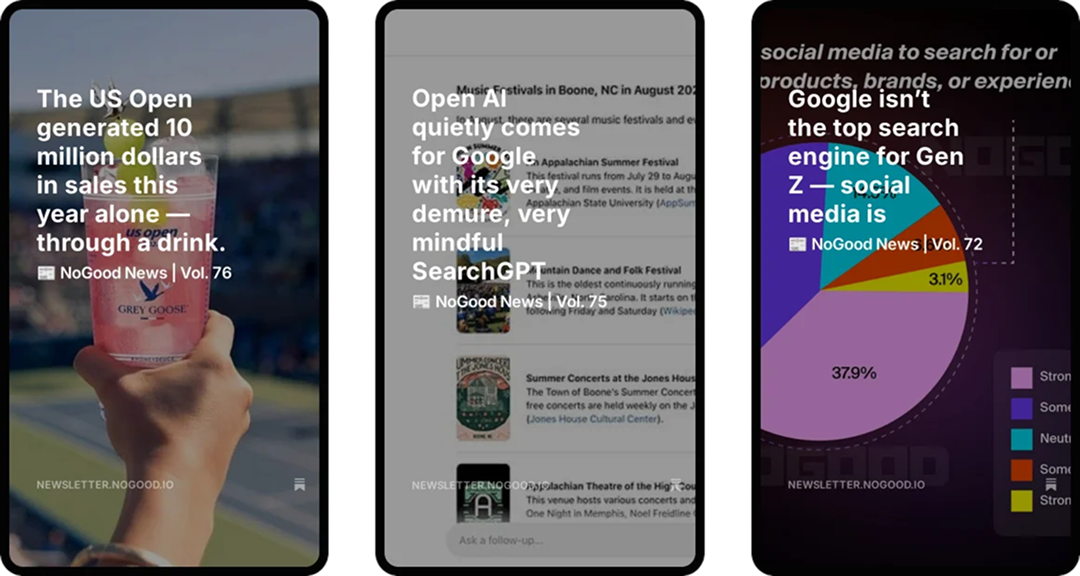
Conclusion
More than just a newsletter delivery system, Substack aims to build a creator-driven ecosystem where writers own their audience relationships, control their revenue streams, and build on their own terms.
The platform’s success has continued to normalize the idea that one person can run a sustainable business model through content creation, showing that loyal, paying communities can replace traditional media gatekeepers.
In 2025, we’ve seen more and more brands warm up to the idea of communicating directly with customers via channels like Substack, and can expect that this direct networking will only become more commonplace in the future.
For writers, podcasters, content creators, and even corporations, Substack promises a world in which depth and authenticity are valued more than volume and virality. If that sounds like something you would like to explore, consider reaching out to NoGood to learn more about the options available to you!






